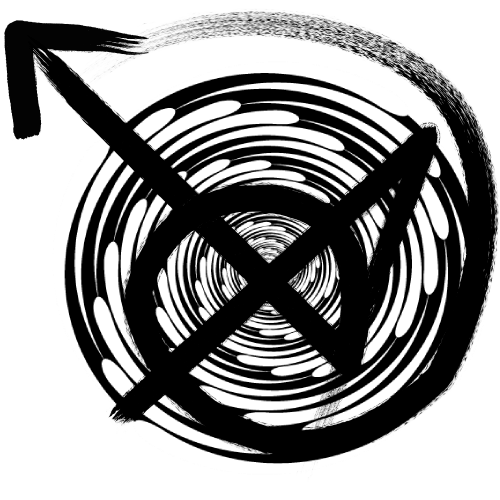East Asia Theater
China: no retreat from ambitious nuclear development plans
Despite a temporary construction moratorium in the wake of the Fukushima disaster, China is still planning to move ahead with an ambitious thrust of nuclear development—with a new generation of supposedly meltdown-proof reactors. The technology in the works will be the "world’s first high-temperature, gas-cooled reactor," an official of the Huaneng Nuclear Power Development Co. told Bloomberg. The new Chinese reactor will not depend on external sources for cooling, but will instead use helium, an inert gas, in its cooling system, officials say. The reactor will be built to "withstand temperatures exceeding 1,600 degrees Celsius (2,912 degrees Fahrenheit) for several hundred hours without melting down," according to the China Business News.
Fukushima: smoke rises from reactors; Tokyo drinking water contaminated
Power was restored to the control room of the No. 3 reactor at the Fukushima Dai-ichi nuclear plant late March 22, and the Tokyo Electric Power Co. plans to try to restart the cooling pumps. Engineers are now trying to reactivate monitoring systems, such as those measuring temperatures of the spent fuel rods. At unit No. 4, a construction vehicle designed to pour concrete for high rises is being used to pump water into the reactor building. International Atomic Energy Agency director general, Yukiya Amano, speaking from Vienna, noted "positive developments," while warning: "The crisis has still not been resolved and the situation at the Fukushima Dai-ichi nuclear power plant remains very serious," with "high levels" of radiation measured around the plant. (USA Today, NHK World, NYT, March 22) Hours after the announcement that power had been restored, TEPCO, said black smoke was rising from the No. 3 reactor building. The smoke gradually cleared after about an house, and TEPCO said that the radiation level at plant gate, one kilometer west of the No. 3 reactor, was unchanged at 265.1 micro-sieverts per hour. Gray smoke was seen rising from the same reactor building the previous day. (NHK World, March 23)
Japan: nuclear alert goes to level five
Japan has raised the alert level at the stricken Fukushima Dai-ichi nuclear plant from four to five on the seven-point international scale of atomic incidents March 18. The crisis, previously rated as a local problem, is now regarded as having "wider consequences." Officials said damage to the containment cores at reactors 2 and 3 prompted the raising of the severity grade. The level five rating does not yet apply to the cooling ponds that have lost water, despite the dangerous heating of the spent fuel stored there. Elevated radiation levels have been detected up to 30 kilometers away from Fukushima.
Fukushima: containment core breached at reactor Number 2?
NucNet, "The Nuclear Communications Network," citing the Japan Atomic Industrial Forum (JAIF), reports March 15 that following the explosions at the Fukushima Dai-ichi plant, "damage is suspected to unit 2's inner or primary containment vessel (PCV)." Additionally, "spent fuel storage pool at unit 4 has been on fire with radioactivity being released directly into the atmosphere." TEPCO apparently told JAIF that the fuel pond fire has now been extinguished. But wire reports indicate that the fire in reactor Number 4 is getting worse.
Fukushima: technicians lose control of two more reactors
Two more reactors at the Fukushima Dai-ichi nuclear power plant in Japan are reported to have lost cooling functions March 15, as technicians continue their struggle to contain what threatens to become a meltdown. Reactors Number 5 and Number 6 now appear to going out of control, with rises in temperature recorded. This follows explosions at reactors 1, 3, and 2 since March 12, as well as a fire now reported at reactor Number 4. Technicians have now lost control of all six reactors at the plant. Additionally, the water in the plant's waste fuel storage pool may be boiling due to loss of coolant, officials said.
Japanese leaders: radiation levels hit danger zone
In a nationally televised statement, Prime Minister Naoto Kan said radiation from the three stricken reactors at the Fukushima Dai-ichi nuclear plant has reached the danger zone: "The level seems very high, and there is still a very high risk of more radiation coming out." Chief cabinet secretary Yukio Edano added: "Now we are talking about levels that can damage human health." He urged residents who have not heeded evacuation orders to close their doors and windows and not wear clothing that has hung outside. A fire is also reported in Fukushima Dai-ichi's reactor Number 4, which means that four of the plant's six reactors are in crisis. (Globe & Mail, DPA, March 15)
Third explosion reported at Fukushima
A third hydrogen explosion at the Fukushima Dai-ichi nuclear plant is reported early March 15, destroying the outer building of reactor Number 2. This means that all three of the reactors that technicians have lost control of at the six-reactor site have now experienced hydrogen explosions that have destroyed or seriously damaged the outer turbine buildings. Engineers had been struggling overnight to cool the nuclear core at Number 2, and stave off a catastrophic meltdown. As with the explosions at reactors 1 and 3, authorities say there was no damage to the containment vessel.
Plutonium threat seen at Fukushima's reactor Number 3
It is now clear that the second explosion at the Fukushima Dai-ichi plant was at reactor Number 3 on March 14, two days after the first explosion at reactor Number 1. Reactor Number 3 is of special concern because, unlike the other two which use standard uranium fuel, it contains "mixed oxide" or MOX fuel—a mixture of uranium and plutonium reprocessed from spent uranium, and significantly more toxic than standard uranium fuel. Safety concerns have long made MOX reactors controversial, and Number 3 may have already started to melt down.















Recent Updates
2 hours 31 min ago
2 hours 56 min ago
10 hours 16 min ago
11 hours 58 min ago
1 day 3 hours ago
1 day 11 hours ago
3 days 4 hours ago
3 days 4 hours ago
3 days 9 hours ago
3 days 9 hours ago